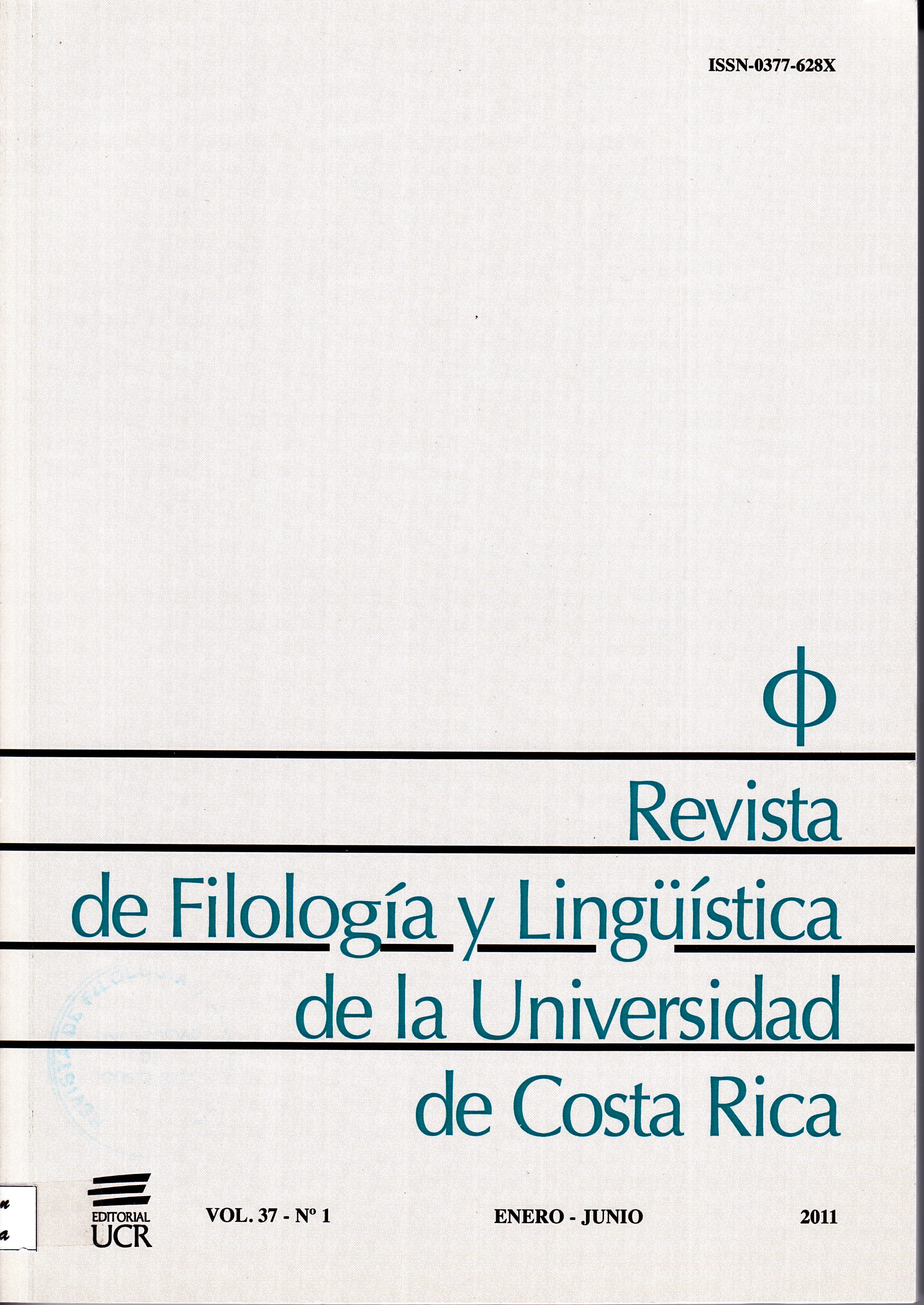Abstract
This article summarizes the state of international research on the figure of the flaneuse. Some expressions of the flaneuse are also researched through the history of literature, as well as investigating the different social practices in which they can be involved. From an historical category perspective, the initial research on the flaneuse denied the possibility of her existence, in terms of the different access men and women have experienced on public spaces in the West. From a conceptual category perspective, other researchers have proposed the existence of different types of flaneuses (the female passer-by enjoying free access to public spaces, the female social researcher, the female pollster, the female social worker, the female consumer, the female movie goer). Now, research analyzes different experiences women have expressed about their access to public spaces in several types of autobiographical writings: in this case, the passante, object of the flaneur’s visual pleasure, gives way to the flaneuse, the woman expressing her own subjectivity.References
Balzac, Honorato de. 1945. Escenas de la vida parisiense II. Historia de los trece. Ferragús, jefe de los devorantes. La duquesa de Langeais. La joven de los ojos de oro. El padre Goriot. La vida elegante parisiense. Buenos Aires: Ediciones Calíope.
Baudelaire, Charles. 2009. Las flores del mal. Madrid: Cátedra.
Bowlby, Rachel. 1992. Still crazy after all these years. Women, writing and psychoanalysis. London and New York: Routledge.
Buck-Morrs, Susan. 1986. “The flâneur, the sandwichman and the whore: the politics of loitering”. New German Critique (39): 99-140.
Casal, Julián del. 1964. Tomo III. Prosas. La Habana: Edición del Centenario. Consejo Nacional de Cultura.
Copelman, Dina M. 1994. “The Gendered Metropolis: Fin-de-Siècle London”. Radical History Review (60): 39-56.
D’Souza, Aruna y Tom McDonough (eds.). 2006. The invisible flâneuse? Gender, public space, and visual culture in nineteenth-century Paris. Manchester: Manchester University Press.
D’Souza, Aruna y Tom McDonough. 2006. “Introduction”. The invisible flâneuse? Gender, public space, and visual culture in nineteenth-century Paris. Manchester: Manchester University Press.
Edwards, Sarah. 2008. “Flaneuse or fallen woman? Edwardian feminity and metropolitan space in heritage film”. Journal of Gender Studies 17 (2): 117-129.
Epstein Nord, Deborah. 1991. “The urban peripatetic: spectator, streetwalker, woman writer”. Nineteenth-Century Literature (46): 351-75.
(1995). Walking the Victorian Streets. Women, Representation, and the City. Ithaca: Cornell University Press.
Friedberg, Anne. 1993. Window shopping. Cinema and the postmodern. Berkeley: University of California Press.
Guerrero, Elisabeth. 2003. “Traperas y extranjeras en la Ciudad de México: Tina Modotti y Angelina Beloff como flaneuses en la narrativa de Elena Poniatowska”. Arizona Journal of Hispanic Cultural Studies (7): 45-54.
Gleber, Anke. 1999. The art of taking a walk. Flanerie, literature, and film in Weimar culture. Princeton: Princeton University Press.
Gordon Mackintosh, Phillip y Glen Norcliffe. 2006. “Flânerie on bicycles: acquiescence to women in public in the 1890s”. The Canadian Geographer 50 (1):17-37.
Gunning, Gunning, Tom. 1997. “From the Kaleidoscope to the X-Ray: Urban Spectatorship, Poe, Benjamin, and Traffic in Souls (1913)”. Wide Angle 19 (4): 25-61.
Hessel, Franz. 1997. Paseos por Berlín (Prol. Jean-Michel Palmier; epi. Walter Benjamín; trad. Miguel Salmerón). Madrid: Editorial Tecnos.
Hottel, Ruth. 1999. “Including Ourselves: The Role of Female Spectators in Agnès Varda’s Le Bonheur and L’Une chante, l’autre pas”. Cinema Journal 38(2): 52-71.
Huart, Louis. 2007 [1841]. “Physiologie du flâneur”. En: Rose, Margaret A. (ed.), 192.
Jenks, Chris y Tiago Neves. 2000. “A Walk on the Wilde Side: Urban Ethnography Meets the Flâneur”. Cultural Values 4 (1): 1-17.
Keidel, Mathias. 2006. Die Wiederkehr der Flâneure. Literarische Flanerie und flanierendes Denken zwischen Wahrnehmung und Reflexion. Würzburg: Königshausen und Newman.
Kessler, Marni. 2006. “Dusting the surface, or the bourgeoise, the veil, and Haussmann’s Paris”. En: D’Souza, Aruna y Tom McDonough (eds.), 49-64.
La Nación. “Buscando pares”. Tiempo libre, 28.08.2003: 2.
La Nación. “Buscando pares”. Tiempo libre, 16.10.2003: 2.
Martínez Ruíz, José. 1968. Las confesiones de un pequeño filósofo. Madrid: Espasa-Calpe.
(2000). Diario de un enfermo. Madrid. Biblioteca Nueva.
Mirzoeff, Nicholas (ed.). 1998. The Visual Culture Reader. London: Routledge.
Mulvey, Laura. 1988. Placer visual y cine narrativo. Valencia: Eutopía.
Parsons, Deborah L. 1999. “Flâneur or Flâneuse? Mythologies of Modernity”. New Formations (38): 91-100.
(2000). Streetwalking the Metropolis. Women, the City and Modernity. New York: Oxford University Press.
Pollock, Griselda. 1998. “Modernity and the Spaces of Femininity.” En: Mirzoeff (ed), 74-84.
Prendergast, Christopher. 1992. Paris and the nineteenth century. Oxford: Blackwell.
Proust, Marcel. 1966. En busca del tiempo perdido. 2. A la sombra de las muchachas en flor. Madrid: Alianza Editorial.
Rifkin, Adrian. 1993. Street noises: Parisian Pleasure, 1900-40. Manchester: Manchester University Press.
Rose, Margaret A. (ed.). 2007. Flâneurs and Idlers. Louis Huart: Physiologie du flâneur (1841). Albert Smith: The Natural History of the Idler upon Town (1848). Bielefeld: Aisthesis Verlag.
Schlossman, Beryl. 2004. “The Night of the Poet:; Baudelaire, Benjamin, and the Woman in the Street”. MLN (119): 1013-1032.
Schor, Naomi. 1992. “Cartes Postales: Representing Paris 1900”. Critical Inquiry (18): 188-245.
Thomas, Greg M. 2006. “Women in public; the display of feminity in the parks of Paris”. En: D’Souza, Aruna y Tom McDonough. (eds), 33-48.
Tester, Keith (ed.). 1994. The flâneur. London: Routledge.
Tristán, Flora. 1972. Paseos por Londres. Lima: Biblioteca Nacional de Perú.
Walkowitz, Judith R.. 1995. La ciudad de las pasiones terribles. Narraciones sobre el peligro sexual en el Londres victoriano. Madrid: Ediciones Cátedra.
Wilson, Elisabeth. 1992. The invisible flâneur”. New Left Review (191): 90-110.
Wolff, Janet. 1985. “The invisible flaneuse: women and the literature of modernity”. Theory, Culture and Society (2): 37-47.
(1994). “The artist and the flâneur: Rodin, Rilke, and Gwen John in Paris”. En: Tester (ed.), 111-37.
(2006). “Gender and the haunting of cities (or, the retirement of the flâneur).” En: Aruna D’Souza y Tom McDonough (eds.), 18-31.
Woolf, Virginia. 1939. La señora Dalloway. Buenos Aires: Editorial Sudamericana.
(1967). Una habitación propia. Barcelona: Seix Barral.
Películas
Siodmak, Robert y Edgar G. Ulmer. 1929/30. Individuos en Domingo (Menschen am Sonntag). Alemania: Studio 29, Moriz Seeler, Präsens films, B/N, 73 minutos.
Walther Ruttmann. 1927. Berlin, die Sinfonie der Groβstadt. Alemania: Bundesarchiv Berlin. ZDF/ARTE Mainz, B/N, 65 minutos.

